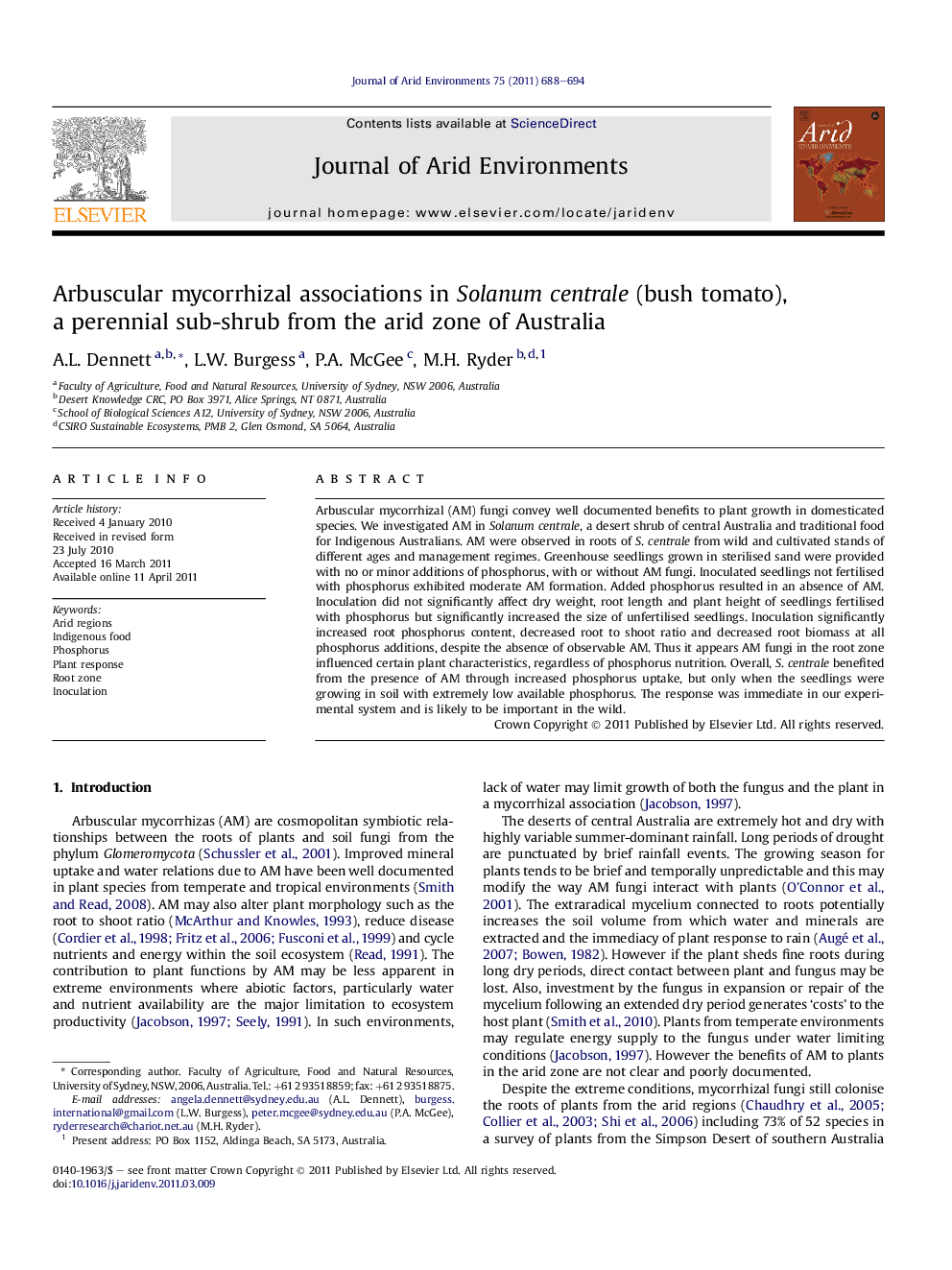| Article ID | Journal | Published Year | Pages | File Type |
|---|---|---|---|---|
| 4393505 | Journal of Arid Environments | 2011 | 7 Pages |
Arbuscular mycorrhizal (AM) fungi convey well documented benefits to plant growth in domesticated species. We investigated AM in Solanum centrale, a desert shrub of central Australia and traditional food for Indigenous Australians. AM were observed in roots of S. centrale from wild and cultivated stands of different ages and management regimes. Greenhouse seedlings grown in sterilised sand were provided with no or minor additions of phosphorus, with or without AM fungi. Inoculated seedlings not fertilised with phosphorus exhibited moderate AM formation. Added phosphorus resulted in an absence of AM. Inoculation did not significantly affect dry weight, root length and plant height of seedlings fertilised with phosphorus but significantly increased the size of unfertilised seedlings. Inoculation significantly increased root phosphorus content, decreased root to shoot ratio and decreased root biomass at all phosphorus additions, despite the absence of observable AM. Thus it appears AM fungi in the root zone influenced certain plant characteristics, regardless of phosphorus nutrition. Overall, S. centrale benefited from the presence of AM through increased phosphorus uptake, but only when the seedlings were growing in soil with extremely low available phosphorus. The response was immediate in our experimental system and is likely to be important in the wild.
► Arbuscular mycorrhizas were found in wild Solanum centrale (Australian Bush Tomato). ► Inoculated unfertilised seedlings in the glasshouse exhibited moderate AM formation. ► Inoculated fertilised seedlings exhibited no AM formation. ► Inoculation lowered root:shoot ratio and raised root P content without colonisation. ► AM play a significant role in S. centrale growth in low phosphorus environments.
